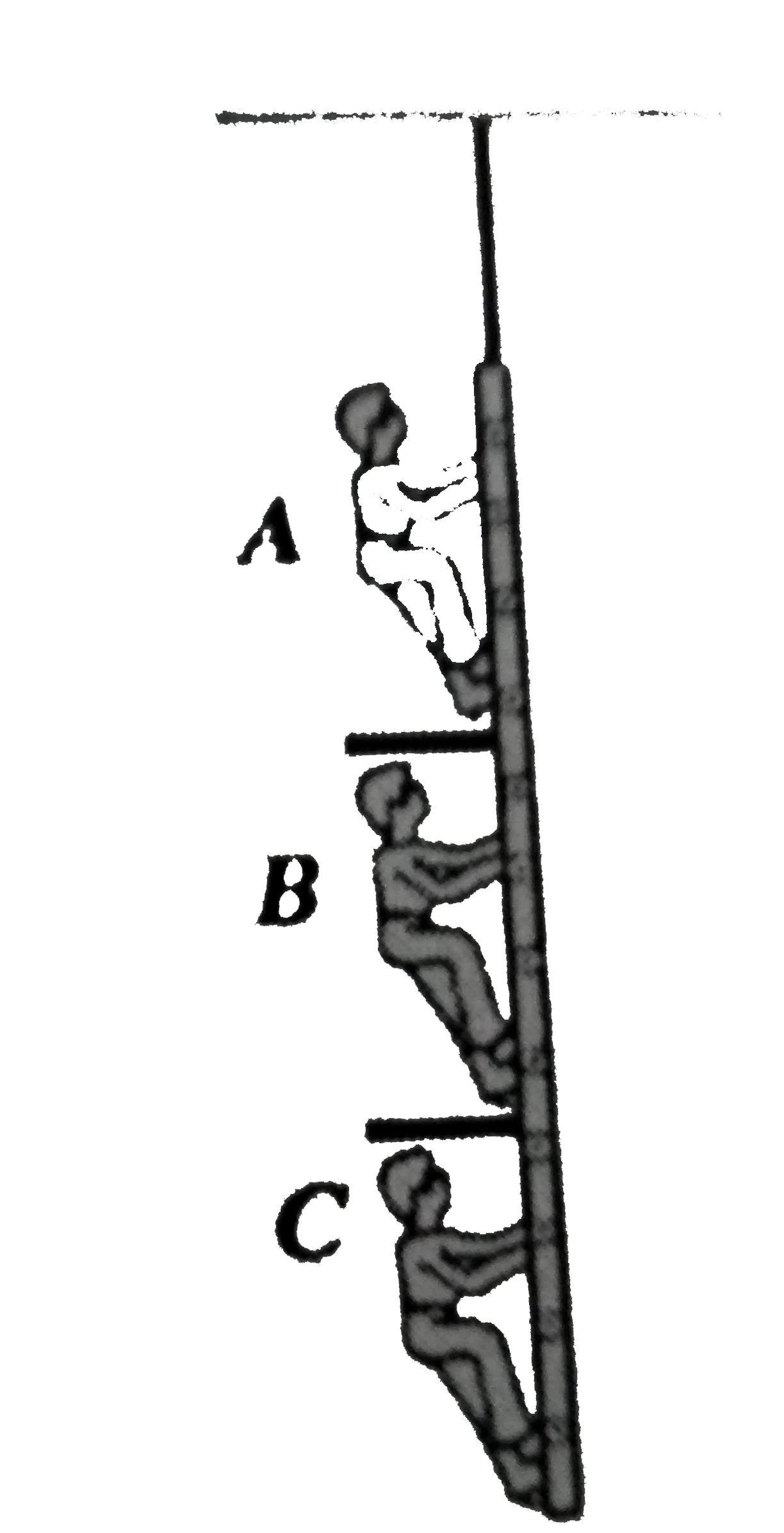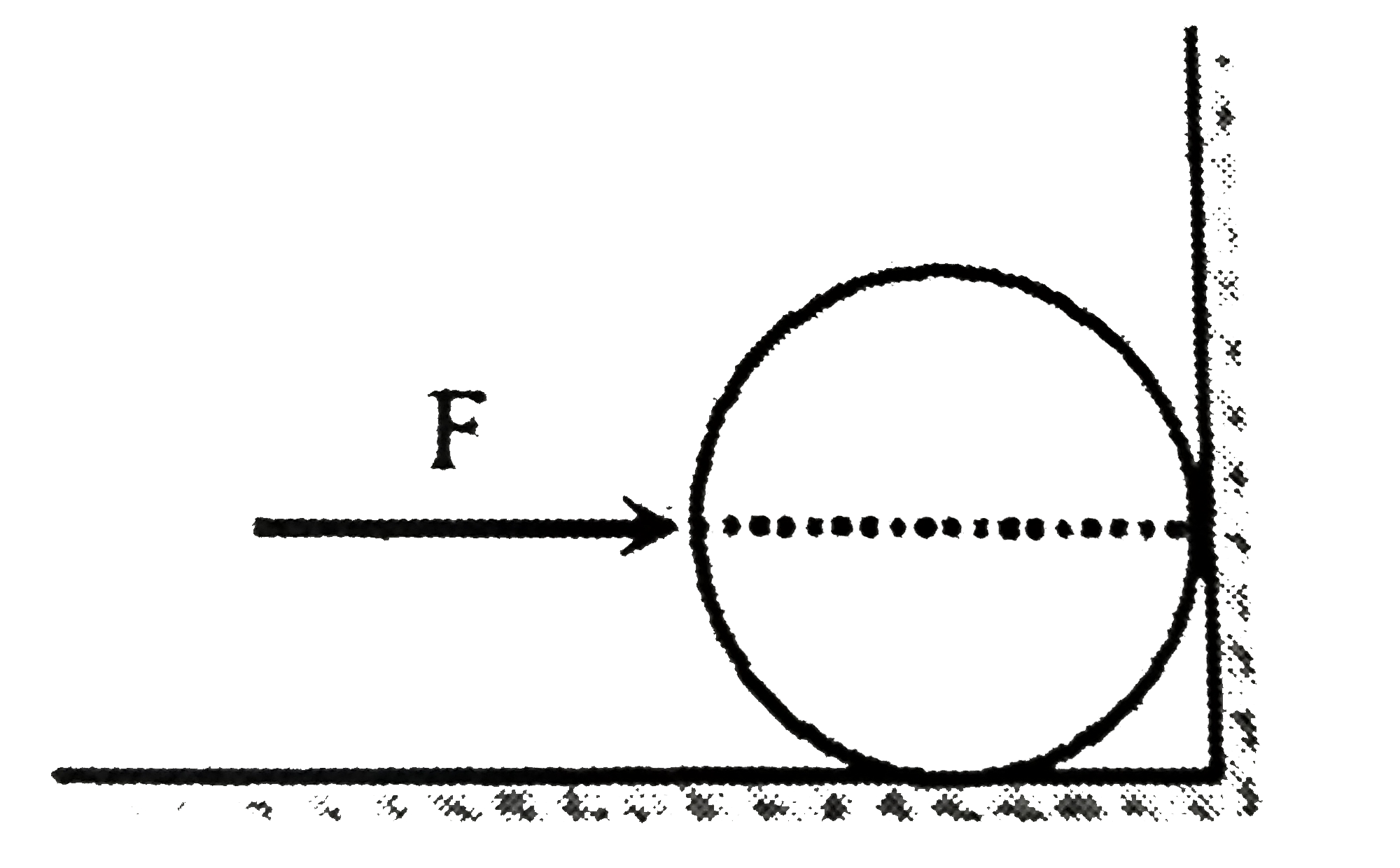A force F applied to an object of mass m1 produces an acceleration of 3.00m/s2. The same force applied to a second object of mass m2 produces an acceleration of 1.00m/s2.
(i) What is the value of the ratio m1/m2 ?
(ii) If m1andm2 are combined, find their acceleration under the action of the force F. Solution in Gujrati
The correct Answer is:(1)m1m2=13(ii)a=3/4m/s2
Step by step video & image solution for A force F applied to an object of mass m_(1) produces an acceleration of 3.00m//s^(2). The same force applied to a second object of mass m_(2) produces an acceleration of 1.00m//s^(2). (i) What is the value of the ratio m_(1)//m_(2) ? (ii) If m_(1) and m_(2) are combined, find their acceleration under the action of the force F. by Physics experts to help you in doubts & scoring excellent marks in Class 12 exams.
Updated on:21/07/2023Topper's Solved these Questions
- NEWTON'S LAWS OF MOTION & FRICTIONBOOK - ALLEN CHAPTER - NEWTON'S LAWS OF MOTION & FRICTIONEXERCISE - EXERCISE (S-2)
9 Videos
- NEWTON'S LAWS OF MOTION & FRICTIONBOOK - ALLEN CHAPTER - NEWTON'S LAWS OF MOTION & FRICTIONEXERCISE - EXERCISE (O-1)
50 Videos
- NEWTON'S LAWS OF MOTION & FRICTIONBOOK - ALLEN CHAPTER - NEWTON'S LAWS OF MOTION & FRICTIONEXERCISE - EXERCISE (JA)
4 Videos
- MOTION IN A PALNEBOOK - ALLEN CHAPTER - MOTION IN A PALNEEXERCISE - SOLVED EXAMPLE
28 Videos
- NEWTONS LAWS OF MOTIONBOOK - ALLEN CHAPTER - NEWTONS LAWS OF MOTIONEXERCISE - EXERCISE-III
28 Videos
Similar Questions
A ladder is hanging from ceiling as shownin figure. Three men A, B and C of masses 40 kg, 60 kg, and 50 kg are climbing the ladder. Man A is going up with retardation 2m/s2, C is going up with an acceleration of 1m/s2 and man B is going up with a constantg speed of 0.5 m/s. Find the tension in the string supporting the ledder. [g=9.8m/s2]

View SolutionA ball of mass m kept at the corner as shown in the figure, is acted by a horizontal force F. The correct free body diagram of ball is

View SolutionA piece of wire is bent in the shape of a parabola y=kx2 (y-axis vertical) with a bead of mass m on it. The bead can slide on the wire without friction. It stays at the lowest point of the parabola when the wire is at rest. The wire is now accelerated parallel to the x-axis with a constant acceleration a. The distance of the new equilibrium position of the bead, where the bead can stay at rest with respect to the wire, from the y-axis is:
View SolutionA particle thrown over a triangle from one end of a horizontal base falls on the other end of the base after grazing the vertex. If αandβ are the base angles of triangle and angle of projection is θ, then prove that (tanθ=tanα+tanβ)
View SolutionAssertion: The driver in a vechicle moving with a constant speed on a straight road is in a non-inertial frame of referance.
Reason: A reference frame in which Newton's laws of motion are applicable is non-inertial.
View SolutionA force of 2N gives a mass m1 an acceleration of 5m/s2 and a mass m2 an acceleration of 7m/s2. What acceleration would be produced if both the masses are tied together?
View SolutionA force produces an acceleration of 4m//s^(2) in a body of m_(1)kg in another body of mass m_(2)kg If the same force is applied to (m_(1) + m_(2)) then the acceleration will be
View SolutionThree blocks of masses m1,m2 and M are arranged as shown in figure. All the surfaces are fricationless and string is inextensible. Pulleys are light. A constant force F is applied on block of mass m1. Pulleys and string are light. Part of the string connecting both pulleys is vertical and part of the strings connecting pulleys with masses m1 and m2 are horizontal.

(P)Accleration of mass m1(1)Fm1(Q)Acceleration of massm2(2)Fm1+m2(R)Acceleration of mass M(3)zero(S)Tension in the string(4)m2Fm1+m2
View SolutionThree block of masses m1,m2 and m3 kg are placed in contact with each other on a frictionless table. A force F is applied on the heaviest mass m1, the acceleration of m2 will be

View SolutionA force produces an acceleration of 4ms−2 in a body of mass m1 and the same force produces an acceleration of 6ms−2 in another body oa mass m2. If the same force is applied to (m1+m2), then the acceleration will be
View SolutionA force F applied to an object of mass m1 prodices an acceleration of 3.00m/s2. The same force applied to a second object of mass m2 produces an acceleration of 1.00m/s2.
(i) What is the value of the ratio m1/m2 ?
(ii) If m1andm2 are combined, find their acceleration under the action of the force F.
View SolutionA mass m1 is moving on a plane surface along a straight path under the action of a force F. Another mass m2 is added on to m1 and the acceleration drops to 1/5 of the ear her value of the acceleration. Assuming that F remains constant, what is the ratio m1:m2 ?
View SolutionWhen a force F is applied to a mass m1, its acceleration is 6 m/s2. If the same force is applied to another mass m2, it gives an acceleration 3 m/s2. If the two masses are tied together and if the same force is applied to the combination it gives an acceleration
View SolutionA force F appllied to a body(A)of mas m1 produces an acceleratioin of 4m/s2. If the same force F is applied to another body (B) of mass m2, then an acceleratiionof 10m/s2, produced in the body. A and B are the tied together and the same force is applied to the combined body. What is the acceleration of the system?
View SolutionTwo masses M1 and m2 are experiencing the same force where m1<m2 the ratio of their acceleration a1a2 is
View SolutionTwo masses M1 and m2 are experiencing the same force where m1<m2 the ratio of their acceleration a1a2 is
View Solution
